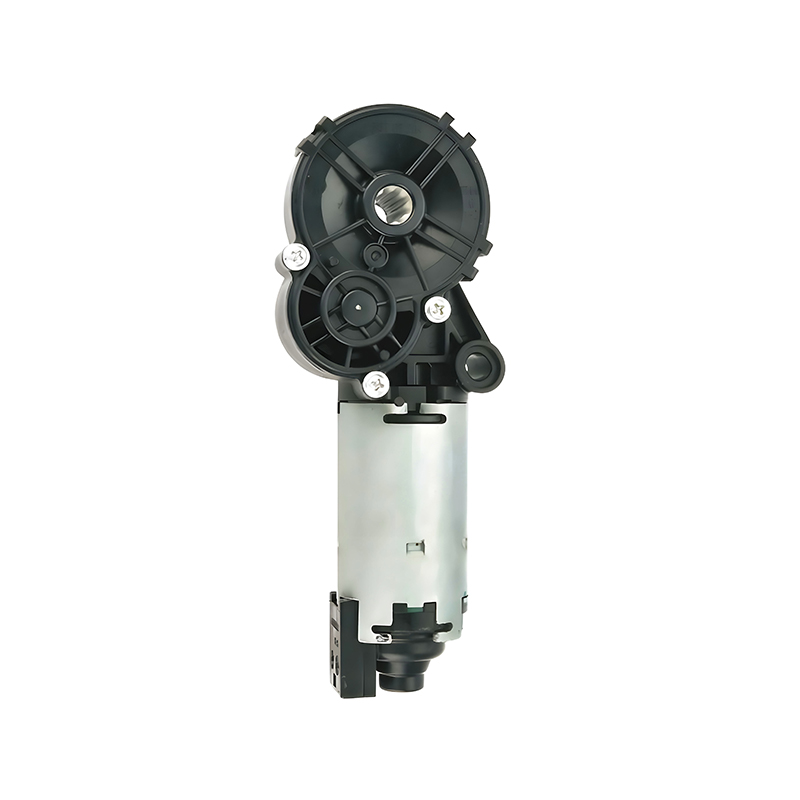In modern vehicles, the smooth and reliable operation of car windows plays a significant role in the overall user experience. The car window regulator and motor are central components that control window movement, ensuring comfort and safety for passengers. Recent updates in the design and manufacturing of car glass motor systems have focused on improving operating efficiency, addressing both performance and energy consumption concerns.

The car window regulator and motor operate together to raise and lower the vehicle's window glass. While the regulator handles the mechanical guidance and support, the motor provides the necessary torque to move the window smoothly. Updates to the car glass motor design have enhanced its responsiveness and reliability, allowing the system to function more effectively over prolonged use.
One key area of improvement in the updated car window regulator and motor is the reduction of power consumption. Previous models sometimes demanded higher electrical input, pilot to increased energy draw from the vehicle's battery. By refining the motor windings and optimizing gear mechanisms, the updated car glass motor can deliver adequate torque with less power. This not only improves the efficiency of window operation but also contributes to the overall energy efficiency of the vehicle, a growing concern in today's automotive industry.
Another important aspect of the updated car window regulator and motor design is noise reduction during operation. Excessive noise during window movement can diminish passenger comfort, particularly during long trips or quiet cabin environments. The enhanced car glass motor incorporates improvements in bearing quality and gear alignment, which less vibration and mechanical noise. This results in a smoother, quieter operation that aligns with modern vehicle standards for interior comfort.
Durability also receives attention in the improved car window regulator and motor systems. Continuous use of power windows exposes the motor and regulator to wear and stress, especially in harsh environmental conditions such as dust, moisture, or bad temperatures. The updated car glass motor features enhanced sealing and corrosion-resistant materials to extend the service life of the system. This means fewer replacements and maintenance needs, benefiting both vehicle owners and manufacturers.
The integration between the car window regulator and motor has been refined to improve synchronization and responsiveness. In older configurations, a lag between motor activation and window movement could cause frustration or imprecise control. With updated control modules and sensor feedback mechanisms, the car glass motor operates more responsively, matching the driver's input more accurately. This smooth interaction ensures that windows open and close efficiently without hesitation or unexpected stops.
Another notable improvement involves safety features associated with the car window regulator and motor. Modern vehicles require anti-pinch functionality to prevent injuries or damage when the window encounters an obstacle during closing. The updated car glass motor includes refined current monitoring systems that detect increased resistance, allowing the window to stop or reverse when necessary. This improvement contributes to safer vehicle operation without compromising the efficiency of window movement.
Manufacturing advancements have also played a role in enhancing the car window regulator and motor's operating efficiency. Precision machining and tighter tolerance control reduce mechanical play and friction between moving parts. These manufacturing improvements help the updated car glass motor achieve more consistent performance across different vehicle models and usage scenarios.
Furthermore, the updated car window regulator and motor are designed to fit within slimmer door panel assemblies. As vehicle designs become more compact and streamlined, space-saving components are essential. The new car glass motor takes advantage of miniaturized elements and optimized layouts to maintain power and torque without increasing size or weight. This compatibility with modern vehicle architectures facilitates easier integration during production.
Users may also notice an improved tactile feel when operating their vehicle's windows. Thanks to better torque control and smoother gear engagement, the updated car window regulator and motor provide a more controlled, natural movement of the window glass. This improvement, although subtle, enhances the overall driving experience and adds a sense of refinement to the vehicle's interior.
The updated car glass motor systems also respond well to variations in electrical supply. Fluctuations in voltage due to battery condition or accessory load can impact motor performance. The redesigned motors incorporate voltage regulation and protection circuitry, maintaining stable operation even under less-than-ideal electrical conditions. This robustness ensures that the car window regulator and motor deliver consistent results, enhancing reliability.
Finally, the environmental benefits of the updated car window regulator and motor cannot be overlooked. Lower power consumption reduces the vehicle's overall energy usage, contributing to reduced emissions in gasoline-powered vehicles and longer driving range in electric vehicles. Additionally, the use of durable, recyclable materials in the car glass motor design supports sustainability goals increasingly emphasized in the automotive sector.
In conclusion, the updated car window regulator and motor systems represent a significant step forward in the operation of vehicle windows. By focusing on efficiency, durability, noise reduction, safety, and integration, the improved car glass motor delivers a balanced solution that meets the evolving demands of modern vehicles. These updates not only enhance user comfort and convenience but also align with broader goals of energy efficiency and sustainability in automotive design. For drivers and manufacturers alike, investing in such refined components helps ensure a better driving experience and supports the advancement of automotive technology.
Your email address will not be published. Required field are marked*